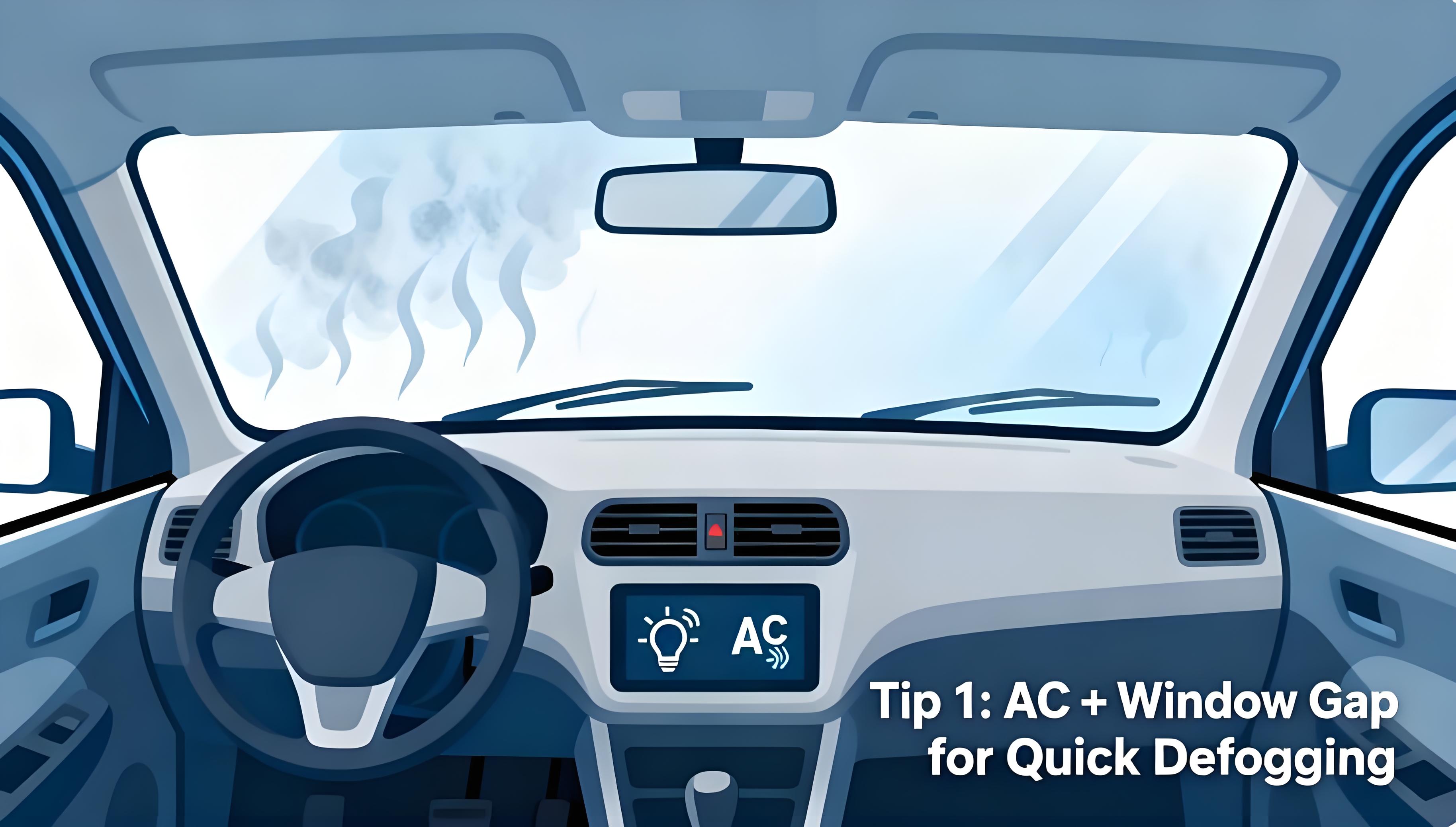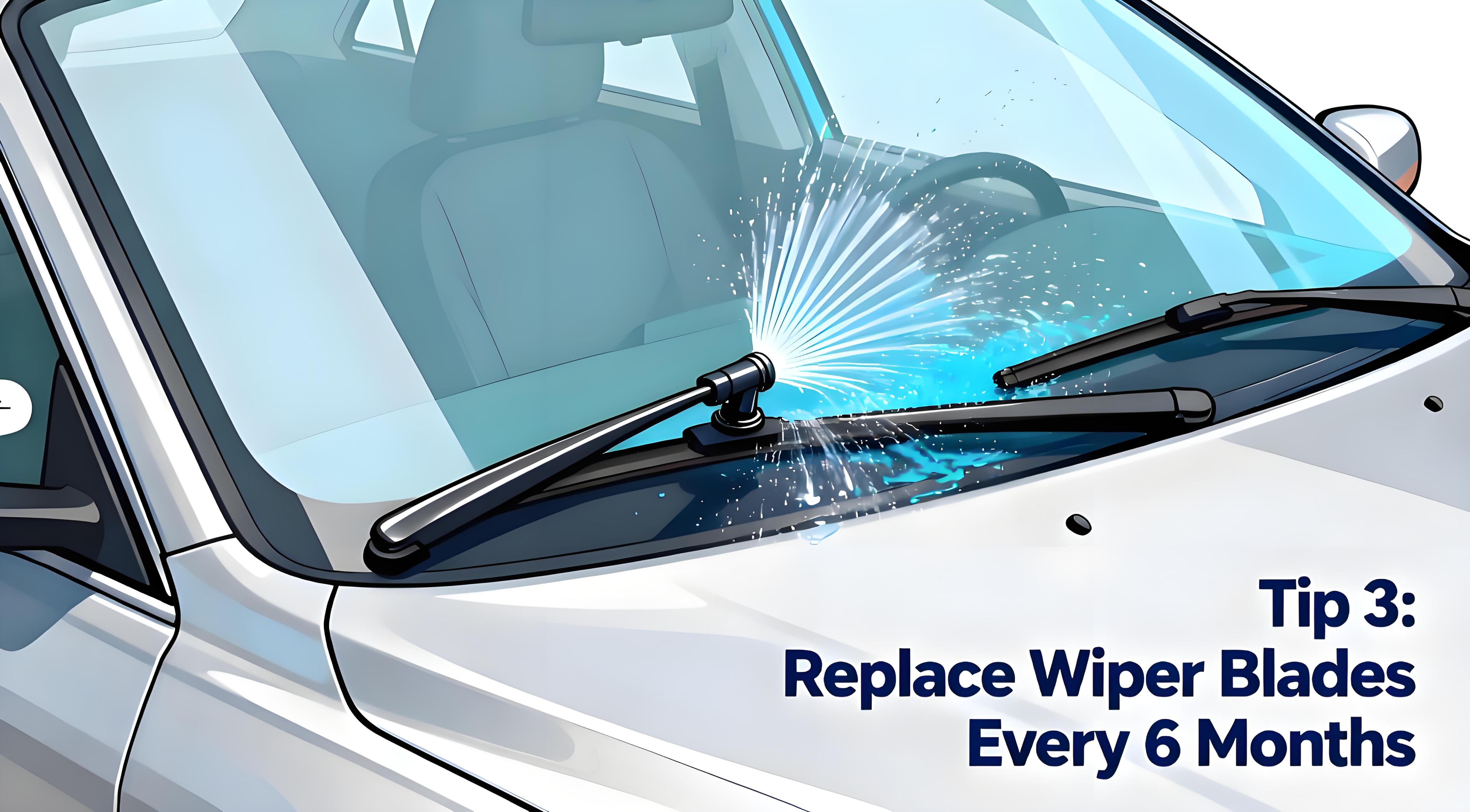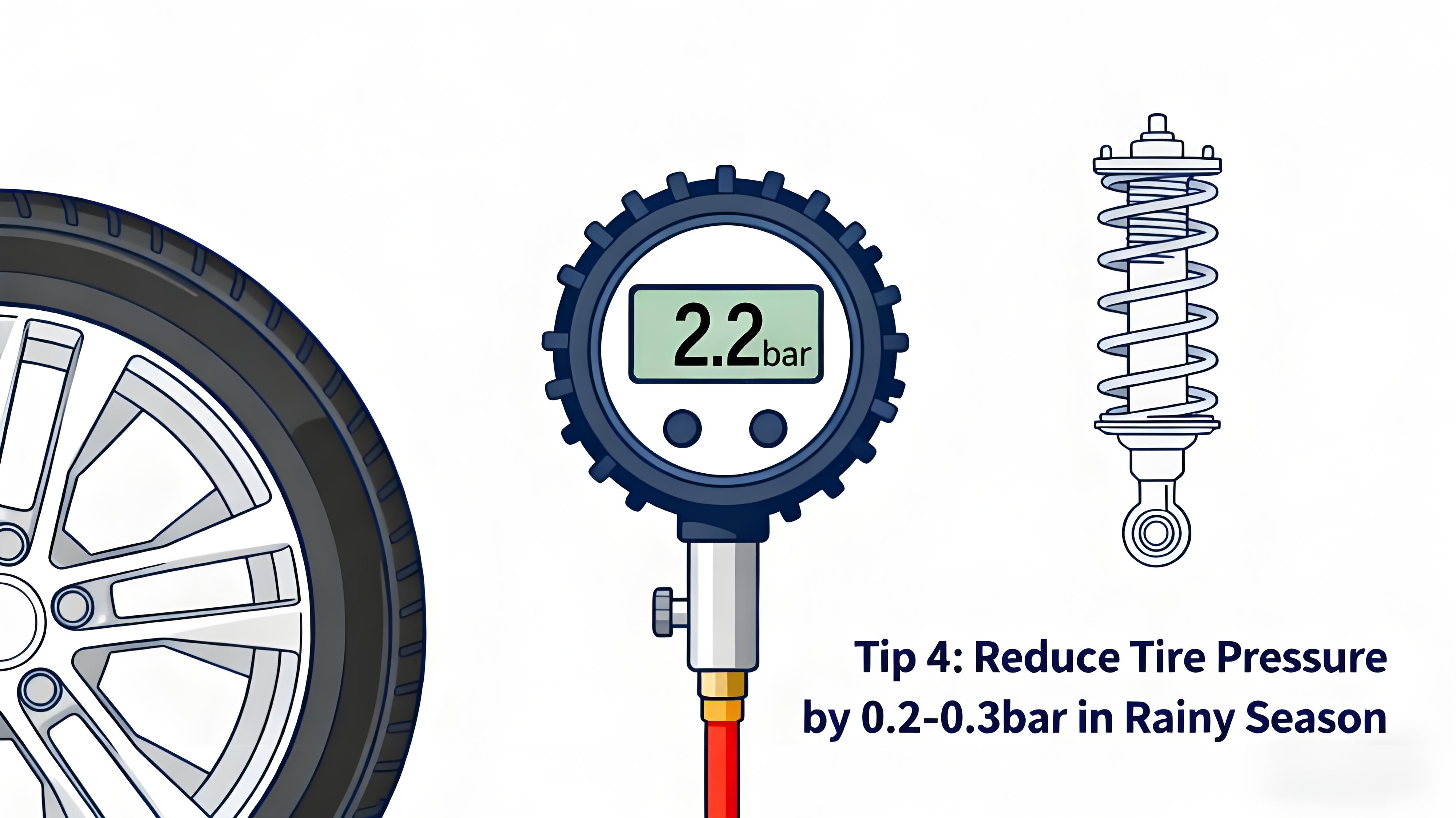Rainy commutes often come with two major headaches: dampness and mildew inside the car, and fogged-up windows blocking visibility. What’s more, neglecting the coordination between tire pressure and shock absorbers can increase driving risks. Below are 5 simple, easy-to-implement tips to help you tackle rainy-day driving troubles with ease, balancing comfort and safety.
1. "Combination Dehumidification" with Air Conditioning + Windows: Rapid Defogging Without Wasting Power
Fog inside the car is mostly caused by temperature differences. After getting in the car, first turn on
external circulation + AC cooling, and at the same time, lower the driver’s and front passenger’s windows by 3-5 centimeters to let moist air escape quickly. You can clear the fog on the windshield in just 1-2 minutes. If fog reappears while driving, switch to
internal circulation + warm air (around 25°C). The warm air will dry the moisture inside the car, preventing new fog from forming due to direct AC airflow on the windows. After parking, remember to leave a 1-centimeter gap in one of the windows to reduce condensation buildup inside the car overnight, so you won’t have to repeatedly defog the windows the next day.

2. Make Good Use of "Low-Cost Dehumidifiers" to Prevent Mildew in the Car
Don’t want to spend money on dehumidifier boxes? You can put
dried tea leaves or coffee grounds into breathable cloth bags, and place them in the door storage compartments, armrest box, and trunk respectively. They absorb moisture while emitting a light, pleasant fragrance. Dampness tends to accumulate under the seats and in the gaps of floor mats. After each parking, lift the floor mats to let them air out, and wipe the gaps between the seats with a dry cloth every week to prevent mold growth. If there’s already a musty smell in the car, open all the doors on a sunny day, let the car be exposed to the sun for 1-2 hours, and use the AC’s external circulation to completely eliminate the odor.

3. "Proper Use" of Windshield Wipers to Avoid Blurred Vision
Windshield wipers are crucial for maintaining good visibility on rainy days. First, check the wiper blades regularly. If there are cracks or water streaks left after wiping, replace them in time (it’s recommended to replace them every 6 months). Adjust the wiper speed according to the rainfall while driving: use the
intermittent mode (once every 10-15 seconds) for light rain to avoid scratches on the glass caused by frequent friction of the blades; use the
high-speed mode for heavy rain, and at the same time, turn on the rear windshield wiper and position lights to clearly see the vehicles behind. In heavy downpours, if a "water film" forms on the windshield, spray windshield washer fluid and use the wipers to enhance the wiping effect and keep the view clear.

4. "Rainy Season Adjustment" of Tire Pressure: More Stability with Shock Absorber Coordination
Roads are slippery in the rainy season, so tire pressure should be
reduced by 0.2-0.3 bar compared to normal (for example, from the usual 2.5 bar to 2.2-2.3 bar in the rainy season). This increases the tire’s contact area with the road and improves grip. At the same time, it’s important to note that excessively low tire pressure will increase the burden on the shock absorbers — when encountering potholes on slippery roads, insufficient tire pressure reduces the tire’s buffering capacity, forcing the shock absorbers to bear greater impact. It’s recommended to check the tire pressure once a week to ensure consistent pressure on both left and right tires, avoiding uneven body tilt caused by uneven tire pressure on either side, which affects driving stability.

5. "Slow Down" When Passing Bumpy Roads: Protect Shock Absorbers & Ensure Safety
Rainy seasons often lead to water accumulation on roads, hiding potholes and manhole covers. While driving, if you spot water accumulation or bumps on the road, slow down in advance (to below 30 km/h) to give the shock absorbers enough time to buffer the impact. Avoid rushing through puddles — on one hand, this prevents water from splashing into the engine compartment; on the other hand, it reduces the instantaneous pressure of accumulated water on the shock absorbers, extending their service life. If you notice obvious body shaking or abnormal noises after passing a bumpy road, the shock absorbers may be faulty and need to be inspected in time to ensure the safety of subsequent commutes.
Rainy commutes may be inconvenient, but mastering these tips not only keeps the interior of your car dry and your vision clear but also improves driving safety through the coordination of tire pressure and shock absorbers. Remember, a comfortable rainy commute starts with detailed maintenance!



